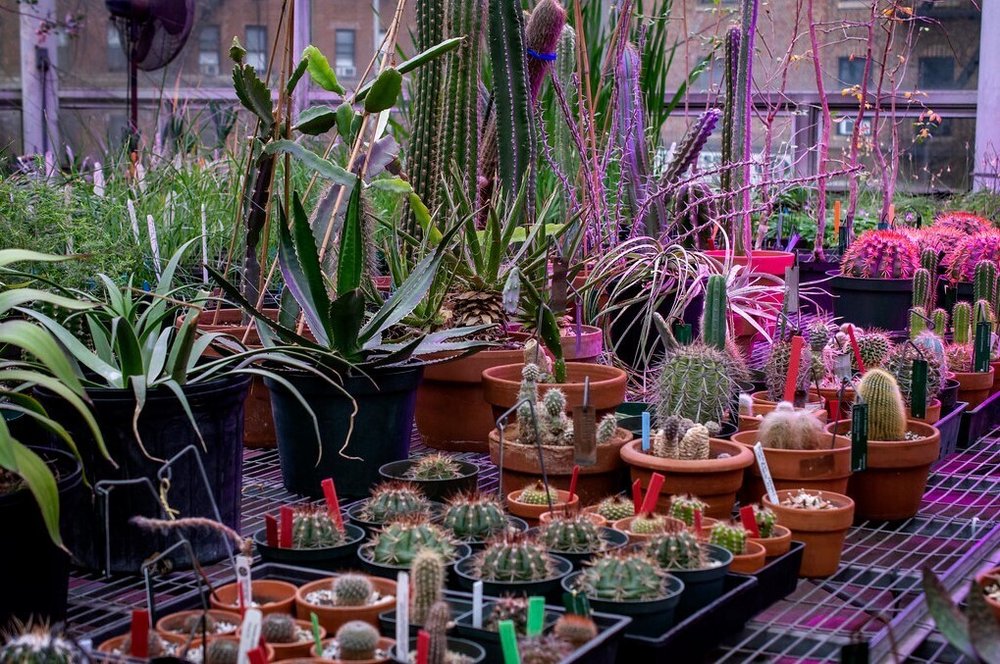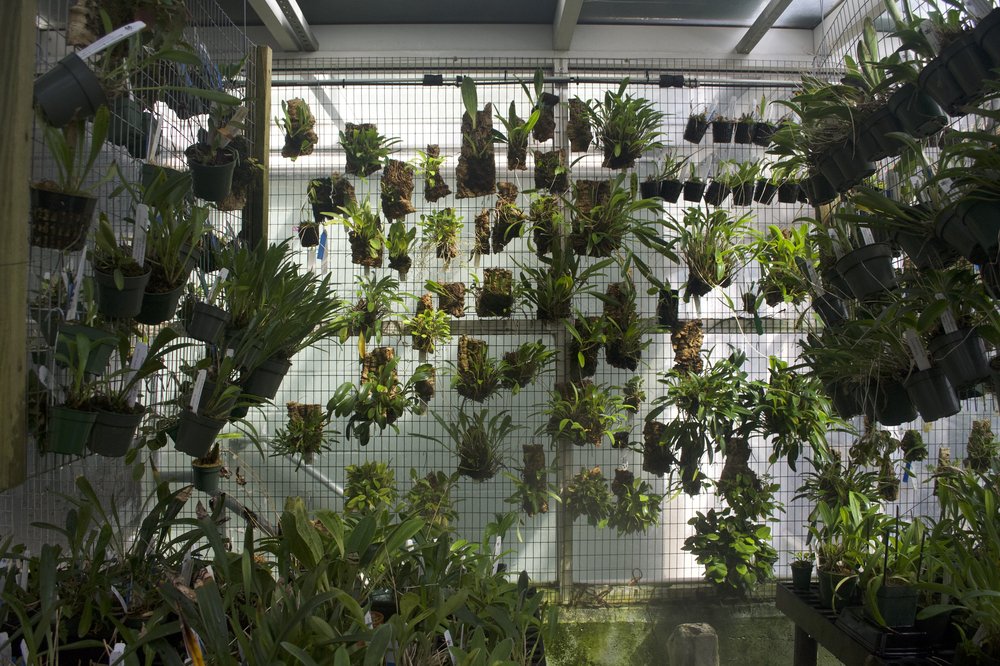A secret garden: The beauty you're not seeing at Brooklyn Botanic
Aug. 2, 2025, 10 a.m.
In 31,500 square feet is a wide variety of life normally hidden from public view.

The Brooklyn Botanic Garden is hiding a stunning secret.
Behind its public-facing garden is a labyrinth of nurseries, housing its enormous variety of not displayed flora. Back here, over 9,000 specimens are kept content by a full-time nursery gardener and a cadre of volunteers and seasonal workers in an array of indoor workhouses and outdoor areas spread across more than 31,500 square feet.
There are no placards of plant genus, no perfectly potted arrangements, no ever-lush foliage and no in-bloom flowers in this shadow storage garden. In Workhouse 1, the storage area for warm-temperature and desert plants, large industrial grey tables hold tens of common brown pots containing not-particularly-lively-looking specimens. In the corner are green plastic containers, some with popsicle sticks stuck in their sides, stacked atop one another in no clear order, a laminated piece of paper reading “SA BULBS RESTING” placed on top of a few.
“These pots that don’t look so interesting really are the show of this collection,” said Shauna C. Moore, the Garden's director of horticulture, gesturing at the green plastic containers, which hold the Garden’s world-renowned collection of South African bulbs.

“Right now they’re dormant, so they don’t look like much,” she added, walking past a pair of ancient-looking switches, under which a toy monkey figurine sat on a bed of moss. “In mid-winter is when they really shine.”
Workhouse 2 is for the tropical plant storage, including nine species of amorphophallus — better known as the “corpse flower” for its putrid smell when in bloom.
“You’re going to get a facial,” Moore joked, opening the door and letting out a blast of humidity on an already sweltering July afternoon.
A shibori-dyed dress hung from the ceiling — the environment is ideal for the plants that live here, but also for staffers looking to steam-clean the occasional outfit.
Yet another workhouse is dedicated to orchids.
The appearance in these massive, behind the scenes storage spaces is more cluttered than the serene sanctuary of the active displays, but there is in fact great order to this living forest. It’s the nursery gardener Patrick Austin’s well-maintained domain. “If someone comes on the weekends and something is moved or touched, he’ll know,” Moore said.
Outside, there are hundreds of bonsai trees, tens of bulbs drying in the sun, a badly weathered statue of Sneezy, small bowls to catch rain water for the feral cats that help with the mice, and a nice shade cover from the trees on Washington Avenue.
Sometimes, sparrows make their nests in plants outside, and staffers water around them.
“I think everyone who works here is pretty sympathetic and empathetic to other living things,” Austin said.
Many of the specimens outside are resting, and will be put out for public display only once they’re in their flowering prime. Others are getting ready to be sent to other institutions — Green-Wood Cemetery, on occasion, or other places further abroad.

In a way, it’s akin to a mailroom. “A lot of things here are on a long timeframe,” Austin said. Sometimes, they won’t emerge for years.
This type of living storage is common for other large gardens, but the Brooklyn Botanic Garden is unique in that it’s put so much aside in an area where space is in high demand. Pennsylvania’s Longwood Gardens, for instance, is far larger than the Brooklyn Botanic Garden, but land in Kennett Square is far more available than in prime, Central Brooklyn.
"We're small. We're very small," Moore said. "Almost every single bit of [space] we have here is consumed with plants."
A first look at the New York Botanical Garden's floral tribute to Vincent Van Gogh The Brooklyn Botanic Garden celebrates 100 years of its bonsai collection